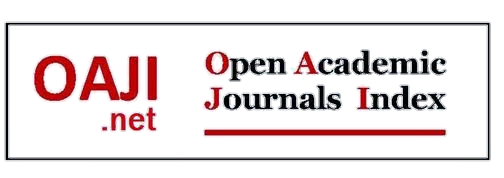The Influence of Competence and Workload on the Performance of Functional Judicial Administrative Officers at the Supreme Court of the Republic of Indonesia with Motivation as a Mediating Variable
1Muharrom Ainul Yaqin, 2Ribhan, 3Nova Mardiana
1,2,3Magister Management, Faculty of Economics and Business, University of Lampung, Lampung city
https://doi.org/10.47191/jefms/v8-i5-31ABSTRACT:
The performance of functional judicial administrative officers at the Supreme Court of the Republic of Indonesia plays a strategic role in ensuring the efficiency and effectiveness of the judicial system. Competence and workload are presumed to influence employee performance, while motivation may serve as a mediating variable in this relationship. However, to date, there has been no specific study investigating this relationship within the context of the Supreme Court of Indonesia. Therefore, this study aims to analyze the influence of competence and workload on the performance of functional judicial administrative officers, with motivation as a mediating variable. This study employs a quantitative approach using a survey method. The research sample consists of 175 functional judicial administrative officers at the Supreme Court of Indonesia, selected through a stratified random sampling technique. Data were collected using a five-point Likert scale questionnaire covering four main variables: (1) Competence, measured through indicators of disposition, technical skills, work fundamentals, problem-solving, and communication; (2) Workload, assessed by indicators such as work pressure, long working hours, inability to meet job demands, impact on personal life, difficulty concentrating, and fatigue; (3) Motivation, comprising intrinsic and extrinsic motivation dimensions; and (4) Employee Performance, evaluated based on task performance, adaptive performance, and contextual performance. Data analysis was conducted using regression statistical methods and the Sobel test to examine the mediating effect. The results indicate that competence has a positive and significant influence on employee performance. Workload also affects performance, although its impact varies depending on the intensity of the workload. Motivation is proven to mediate the relationship between competence and performance, as well as between workload and performance. The main conclusion of this study is that enhancing competence and optimizing workload management can improve employee performance, especially when supported by high levels of motivation. These findings have implications for human resource management policies at the Supreme Court of Indonesia, particularly in efforts to enhance employee effectiveness and productivity.
KEYWORDS:
Competence, Workload, Motivation, Employee Performance, Judicial Administration, Supreme Court of Indonesia
REFERENCES:
1) Aggarwal, S. (2024). Impact of dimensions of organisational culture on employee satisfaction and performance level in select organisations. IIMB Management Review. https://doi.org/10.1016/J.IIMB.2024.07.001
2) Asamani, J. A., Amertil, N. P., & Chebere, M. (2015). The influence of workload levels on performance in a rural hospital.Https://Doi.Org/10.12968/Bjhc.2015.21.12.577, 21(12), 577–586. https://doi.org/10.12968/BJHC.2015.21.12.577
3) Barriga Medina, H. R., Campoverde, R. E., Paredes-Aguirre, M., Melo Vargas, E. R., & Rosero Barzola, C. (2024). Work performance implications of meaning in life: The mediating role of Motivation. Wellbeing, Space and Society, 7, 100213. https://doi.org/10.1016/J.WSS.2024.100213
4) Bénabou, R., & Tirole, J. (2003). Intrinsic and Extrinsic Motivation. The Review of Economic Studies, 70(3), 489–520. https://doi.org/10.1111/1467-937X.00253
5) Bennour, M., & Crestani, D. (2007). Using competencies in performance estimation: From the activity to the process.Computers in Industry, 58(2), 151–163. https://doi.org/10.1016/j.compind.2006.09.009
6) Bruggen, A. (2015). An empirical investigation of the relationship between workload and performance. Management Decision, 53(10), 2377–2389. https://doi.org/10.1108/MD-02-2015-0063/FULL/XML
7) Çalışkan, A., & Köroğlu, E. Ö. (2022). Job Performance, Task Performance, Contextual Performance: Development and Validation of A New Scale. Uluslararası İktisadi ve İdari Bilimler Dergisi, 8(2), 180–201. https://doi.org/10.29131/UIIBD.1201880
8) Damanik, M. (2020). Pengaruh Kepemimpinan, Motivasi, dan Remunerasi Terhadap Budaya Kerja dan Peningkatan Kinerja Pegawai di Lingkungandirektorat Jenderal Pajak KPP Pratama Pematang Siantar. Jurnal Manajemen Pendidikan Dan Ilmu Sosial, 2(1), 194–212. https://doi.org/10.38035/JMPIS.V2I1.441
9) Deci, E. L., & Ryan, R. M. (2008). Self-determination theory: A macrotheory of human motivation, development, and health.Canadian Psychology, 49(3), 182–185. https://doi.org/10.1037/A0012801
10) Dessler, G. (2020). Fundamentals of human resource management. https://thuvienso.hoasen.edu.vn/handle/123456789/12641
11) Desyanti, MS, M., Friscila, S. D., Wiweko, H., Lismayani, A., Faisol, A., & Ramadhani, M. A. (2021). Kewirausahaan dan Manajemen Bisnis (K. Hayati & N. I. Nabila, Eds.). Expert.
12) Echdar, S., & Maryadi. (2019). Business Ethnics and Enterpreneurship (Etika Bisnis dan Kewirausahaan). Deepublish.
13) Griffin, R. W. (2013). Management: Principles and Practices (11th ed.). South-Western Cengage Learning.
14) Güngör, P. (2011). The Relationship between Reward Management System and Employee Performance with the Mediating Role of Motivation: A Quantitative Study on Global Banks. Procedia - Social and Behavioral Sciences, 24, 1510–1520. https://doi.org/10.1016/J.SBSPRO.2011.09.029
15) Hair, J. F., Black, W. C., Babin, B. J., & Anderson, R. E. (2019). Multivariate Data Analysis - Eight Edition (8th ed.). Annabel Ainscow. www.cengage.com/highered
16) Hancock, P. A., & Matthews, G. (2019). Workload and Performance: Associations, Insensitivities, and Dissociations. Https://Doi.Org/10.1177/0018720818809590, 61(3), 374–392. https://doi.org/10.1177/0018720818809590
17) Jalali, M., Esmaeili, R., Habibi, E., Alizadeh, M., & Karimi, A. (2023). Mental workload profile and its relationship with presenteeism, absenteeism and job performance among surgeons: The mediating role of occupational fatigue. Heliyon, 9(9), e19258. https://doi.org/10.1016/J.HELIYON.2023.E19258
18) Kim, S. (2005). Individual-level factors and organizational performance in government organizations. In Journal of Public Administration Research and Theory (Vol. 15, Issue 2, pp. 245–261). https://doi.org/10.1093/jopart/mui013
19) Klarner, P., Sarstedt, M., Hoeck, M., & Ringle, C. M. (2013). Disentangling the Effects of Team Competences, Team Adaptability, and Client Communication on the Performance of Management Consulting Teams. Long Range Planning, 46(3), 258–286. https://doi.org/10.1016/J.LRP.2013.03.001
20) Koopmans, L., Bernaards, C., Hildebrandt, V., Van Buuren, S., Van Der Beek, A. J., & de Vet, H. C. w. (2012). Development of an individual work performance questionnaire. International Journal of Productivity and Performance Management, 62(1), 6–28. https://doi.org/10.1108/17410401311285273/FULL/XML
21) Latham, G. P., Winters, D. C., & Locke, E. A. (1994). Cognitive and motivational effects of participation: a mediator study’.Journal of Organizational Behavior, 15, 49–63.
22) Layek, D., & Koodamara, N. K. (2024). Motivation, work experience, and teacher performance: A comparative study. Acta Psychologica, 245, 104217. https://doi.org/10.1016/J.ACTPSY.2024.104217
23) Levenson, A. R., Van der Stede, W. A., & Cohen, S. G. (2006). Measuring the relationship between managerial competencies and performance. Journal of Management, 32(3), 360–380. https://doi.org/10.1177/0149206305280789
24) Małachowski, B., & Korytkowski, P. (2016). Competence-based performance model of multi-skilled workers. Computers & Industrial Engineering, 91, 165–177. https://doi.org/10.1016/J.CIE.2015.11.018
25) Matriadi, F., & Dalimunthe, R. F. (2018). Analyzing the Compensation and Competence on Senior High Schools Teacher’s Performance through the Mediating Role of Job Motivation. Advances in Economics, Business and Management Research (AEBMR), 46, 612–619. https://doi.org/10.2991/EBIC-17.2018.98
26) Mushabe, C., Abreh, M. K., & Mills, C. A. (2022). Reconceptualizing faculty workload as a measure of human resource motivation and performance in higher education. Social Sciences & Humanities Open, 6(1), 100279. https://doi.org/10.1016/J.SSAHO.2022.100279
27) Omolayo, B. O., & Omole, C. O. (2013). Influence of Mental Workload on Job Performance. Job Performance Article in International Journal of Humanities and Social Science, 3(15). www.ijhssnet.com
28) Otoo, F. N. K. (2019). Human resource development (HRD) practices and banking industry effectiveness: The mediating role of employee competencies. European Journal of Training and Development, 43(3–4), 250–271. https://doi.org/10.1108/EJTD- 07-2018-0068/FULL/XML
29) Pacher, C., Woschank, M., & Zunk, B. M. (2024). The Impact of Competence on Performance in Industrial Engineering and Management: Conceptualization of a Preliminary Research Model. Procedia Computer Science, 232, 794–803. https://doi.org/10.1016/J.PROCS.2024.01.079
30) Potnuru, R. K. G., & Sahoo, C. K. (2016). HRD interventions, employee competencies and organizational effectiveness: an empirical study. European Journal of Training and Development, 40(5), 345–365. https://doi.org/10.1108/EJTD-02-2016- 0008/FULL/XML
31) Pradhan, R. K., & Jena, L. K. (2016). Employee Performance at Workplace: Conceptual Model and Empirical Validation. Http://Dx.Doi.Org/10.1177/2278533716671630, 5(1), 69–85. https://doi.org/10.1177/2278533716671630
32) Qureshi, I., Jamil, R., Iftikhar, M., Arif, S., Lodhi, S., Naseem, I., & Zaman, K. (2012). Job Stress, Workload, Environment and Employees Turnover Intentions: Destiny or Choice. https://papers.ssrn.com/abstract=2152930
33) Rafiee, M., Eskandari, T., Mahmood, E. A., Zokaei, M., Falahati, M., & Khalilzadeh Naghneh, M. H. (2024). The effect of COVID- 19 anxiety on nurses’ productivity determinants through perceived workload and individual job performance: A Bayesian mediation analysis. Heliyon, 10(14), e34099. https://doi.org/10.1016/J.HELIYON.2024.E34099
34) Rethans, J.-J., Norcini, J. J., Baro´n-Maldonado, M., Blackmore, D., Jolly, B. C., Laduca, T., Lew, S., Page, G. G., & Southgate, L.
35) H. (2002). The relationship between competence and performance: implications for assessing practice performance. Medical Education.
36) Richards, J. C. (2010). Competence and performance in language teaching. In RELC Journal (Vol. 41, Issue 2, pp. 101–122). https://doi.org/10.1177/0033688210372953
37) Sanyal, M. K., & Biswas, S. B. (2014). Employee Motivation from Performance Appraisal Implications: Test of a Theory in the Software Industry in West Bengal (India). Procedia Economics and Finance, 11, 182–196. https://doi.org/10.1016/S2212- 5671(14)00187-7
38) Sekaran, U., & Bougie, R. (2016). Research Methods for Business: A Skill-Building Approach - Seventh Edition (7th ed.). Wiley. www.wileypluslearningspace.com
39) Steinmayr, R., Dinger, F. C., & Spinath, B. (2012). Motivation as a Mediator of Social Disparities in Academic Achievement.European Journal of Personality, 26(3), 335–349. https://doi.org/10.1002/per.842
40) Sturm, R. E., Vera, D., & Crossan, M. (2017). The entanglement of leader character and leader competence and its impact on performance. The Leadership Quarterly, 28(3), 349–366. https://doi.org/10.1016/J.LEAQUA.2016.11.007
41) Van Den Bossche, R., Vanmechelen, K., & Broeckhove, J. (2010). Cost-optimal scheduling in hybrid IaaS clouds for deadline constrained workloads. Proceedings - 2010 IEEE 3rd International Conference on Cloud Computing, CLOUD 2010, 228–235. https://doi.org/10.1109/CLOUD.2010.58
42) Van Herpen, M., Cools, K., & Van Praag, M. (2006). Wage Structure and the Incentive Effects of Promotions. Kyklos, 59(3), 441–459. https://doi.org/10.1111/J.1467-6435.2006.00341.X
43) Xiao, J. (2006). Survey ranking of job competencies by perceived employee importance: Comparing China’s three regions.Human Resource Development Quarterly, 17(4), 371–402. https://doi.org/10.1002/HRDQ.1182
44) Zysman, J., & Costinot, A. (2022). The Influence of Work Discipline and Workload on Employee Performance (Study on Community Empowerment for Helath Service Employees At California District). Medalion Journal: Medical Research, Nursing, Health and Midwife Participation, 3(1), 19–32. https://doi.org/10.59733/MEDALION.V3I1.15
















